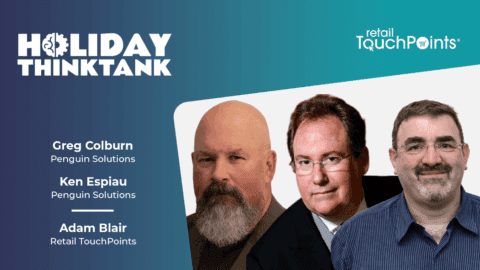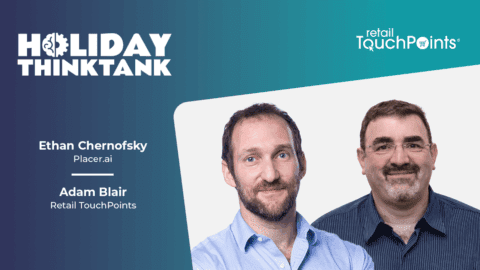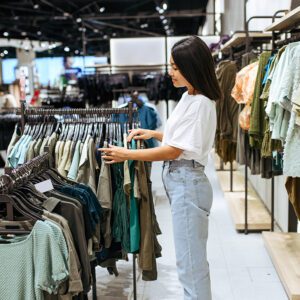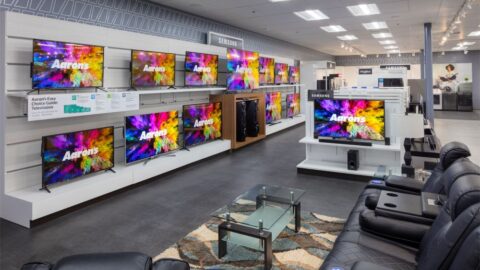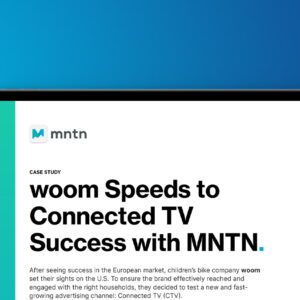Consumers have always done the bulk of their shopping in stores, and the latest Future Consumer Index from EY shows that that hasn’t changed — offline spend continues to capture 77% of retail sales. But a preference for in-store shopping doesn’t mean consumers are averse to using the latest technology: among this same set of consumers, 82% also said that they now trust AI-generated product recommendations. Not only that, but 75% of consumers now trust AI to auto-refill their shopping carts and automate ordering and delivery.

“Younger generations surveyed (Gen Z and millennials) don’t track that much lower for in-store purchases than their older counterparts (Gen X and Boomers),” noted Jon Copestake, Global Lead Retail Analyst at EY in an interview with Retail TouchPoints. “This shows that, while a shift online may be generationally led (i.e. younger generations are certainly more predisposed to online shopping), the extent to which it comes at the cost of in-store shopping is much more moderate.”
The seeming contradiction between a strong preference for shopping in stores alongside increasing satisfaction with new online tools is one of the major themes from its most recent index — which surveyed more than 20,000 consumers in 27 countries — that EY is closely tracking. It highlights the fact that in a world where consumer needs and wants vary dramatically based on channel, retailers today must have clear, defined strategies for both offline and online.
Retail TouchPoints tapped Copestake for more insight into the findings to help parse how retailers can meet customers’ expectations in both environments.
Retail TouchPoints: How do you square the seemingly contradictory behaviors of a continued, even heightened, preference for in-store shopping alongside an enthusiastic uptake of AI-powered online shopping?
Jon Copestake: I think it’s evolving from an “either/or” perspective to a “yes/and” perspective. The two behaviors aren’t mutually exclusive but are becoming increasingly integrated. Fifteen years ago, physical retailers saw online as the enemy and were taking measures to stop “showrooming,” where people went into a store to look at products but then bought them online on their phones. Now they realize the strength they can have in being present across both channels.
The contradiction being described is actually more about the nuances of consumers seeking the easiest or best shopping experience. The easier online shopping is (through things like AI) the more they will engage with it, but the better in-store shopping experiences are, the more likely they are to keep visiting stores for a physical experience.
It also depends on category and geography. Markets like China have created easier and better online shopping ecosystems across categories, whereas in places like Europe and the United States, online is seeing deeper penetration in categories like clothing and cosmetics, but less penetration in categories like grocery.
RTP: Consumers have always done the bulk of their shopping in stores, but the fact that discovery is also now happening more frequently in stores than online flies a bit in the face of our common understanding of the path to purchase. What is causing this shift, and how should brands respond both in stores and online?
Copestake: I don’t think I’d describe it as a shift. I think it’s more a recognition of how much easier product discovery is in-store compared to online.
The mediums through which people can discover new products and brands online may be growing exponentially (social shopping, influencers, product placement, targeted marketing etc.) but it can create confusion, and many of these require the consumer to be active in seeking a path to purchase (watching adverts, engaging with influencers and watching shoppable content streams).
In a store it is much simpler, as the consumer is more of a passive audience. They don’t need to do anything to notice new products in the aisle or see visible promotions or product demonstrations. They’re already there.
RTP: What are consumers most commonly using AI for when it comes to shopping online right now?
Copestake: The most common shift today is the switch from traditional search algorithms to AI-powered search, which can address much more specific needs through the inference of large-language models.
We’re increasingly seeing people discover or research products using clickless searches, where the surface AI search directs them much more specifically to the products they want — for example, using generative AI platforms to identify very specific brands and sizes of products on retail platforms.
Tomorrow this could be framed more by agentic AI, where platforms enable them to go one step further and make purchases directly and more seamlessly — but despite the hype, this is still relatively nascent.
RTP: What should retailers be doing to avoid being left behind by this shift toward AI-powered online shopping?
Copestake: They will need to optimize their SEO for AI-powered searches, which means developing far more complex tagging in product descriptions. This is the first step. Interoperability between their online platforms and major AI platforms also will be necessary.
There is a question over who will own the consumer interaction in an AI-powered future for retail. Will retailers be able to build their own AI interfaces with the agency to manage consumer needs, or will the dedicated AI platforms manage access to the consumer — in which case retailers may need to consider how they can surface their products and brands on those platforms. In physical terms they also can double down on experience to ensure that they maintain and grow the value they deliver to customers looking to engage in store.
RTP: What should retailers be prioritizing through the end of the year to ensure a happy holiday season, particularly with consumers so focused on finances right now?
Copestake: Retailers will no doubt be focusing on their price-to-quality ratios, especially given the economic uncertainty and threat of further supply-side inflation from things like tariffs.
A key priority will lie in managing supply chains to ensure they can keep products stocked at affordable prices and that inventory levels can be optimized to prevent losses. Category optimization might mean they shrink their own SKUs to focus more on private label and open up more to marketplace sellers on their digital platforms to maintain choice at lower risk.
Trying to use demand sensing and social listening to get ahead of any holiday season shopping trends will also be a big bonus, as we’ve seen from the viral keychain toys and recent chocolate crazes.
Clearly a lot will hinge on promotional activity during the crucial Black Friday shopping period, but the economic forecast may squeeze finances further, and efforts to kickstart consumption with big flash sales may not land as well. There has been a trend of some retailers actively refusing to participate in big shopping events — we may see more of this in the coming months.
RTP: Tell us a little bit more about the private label opportunity in this current fiscal environment. How and why are consumer attitudes shifting with regard to private label brands?
Copestake: This has been a long-term shift since the global financial crisis, which was exacerbated by supply chain shocks during and after COVID-19, so it’s not necessarily an emerging opportunity, but it is certainly a significant opportunity.
During these shocks, people traded down out of necessity but noticed that private label quality was largely comparable to more expensive branded products — which has meant that even recovery in income and choice has led them to stick with private label. The prime reason is clearly financial, but equally, retailers are developing their own premium private label lines, which rely on the trust and loyalty they’ve built with consumers.
Consumers are being more conscious in their consumption and see frugality as more of a sign of social status — they might take pride in unearthing private label bargains or “dupes” through channels like social media.
Retailers can also use loyalty schemes to incentivize private label and rationalize assortments to curate choices more towards private label. There is a balancing act here, though. Trends like the rise of retail media are providing opportunities for retailers to benefit from targeting consumers for brands, and some national (or international) brands (particularly in categories like soft drinks and alcoholic drinks) are harder for private label to penetrate.





